Complete Solutions to Solved Examples of chapter AROMATIC COMPOUNDS AND ALKYL AND ARYL HALIDES of Class 12 book with complete answers and questions
| Class 12 | CHEMISTRY |
| Chapter | AROMATIC COMPOUNDS AND ALKYL AND ARYL HALIDES |
| CENGAGE CHEMISTRY | Solved Examples |
| Number Of Questions | 21 |
| Academic Year | 2023-24 |
Benzene, touene, xylene `(o,m,p)` and mesitylene dissolve in `HBF_(4)` to from salts. Expalin the order of basicity:
Mesitylene `gt m- "Xylene" gt o-` and `p-` Xylenen gt Toulene gt BenzeneView SolutionComplete the following :

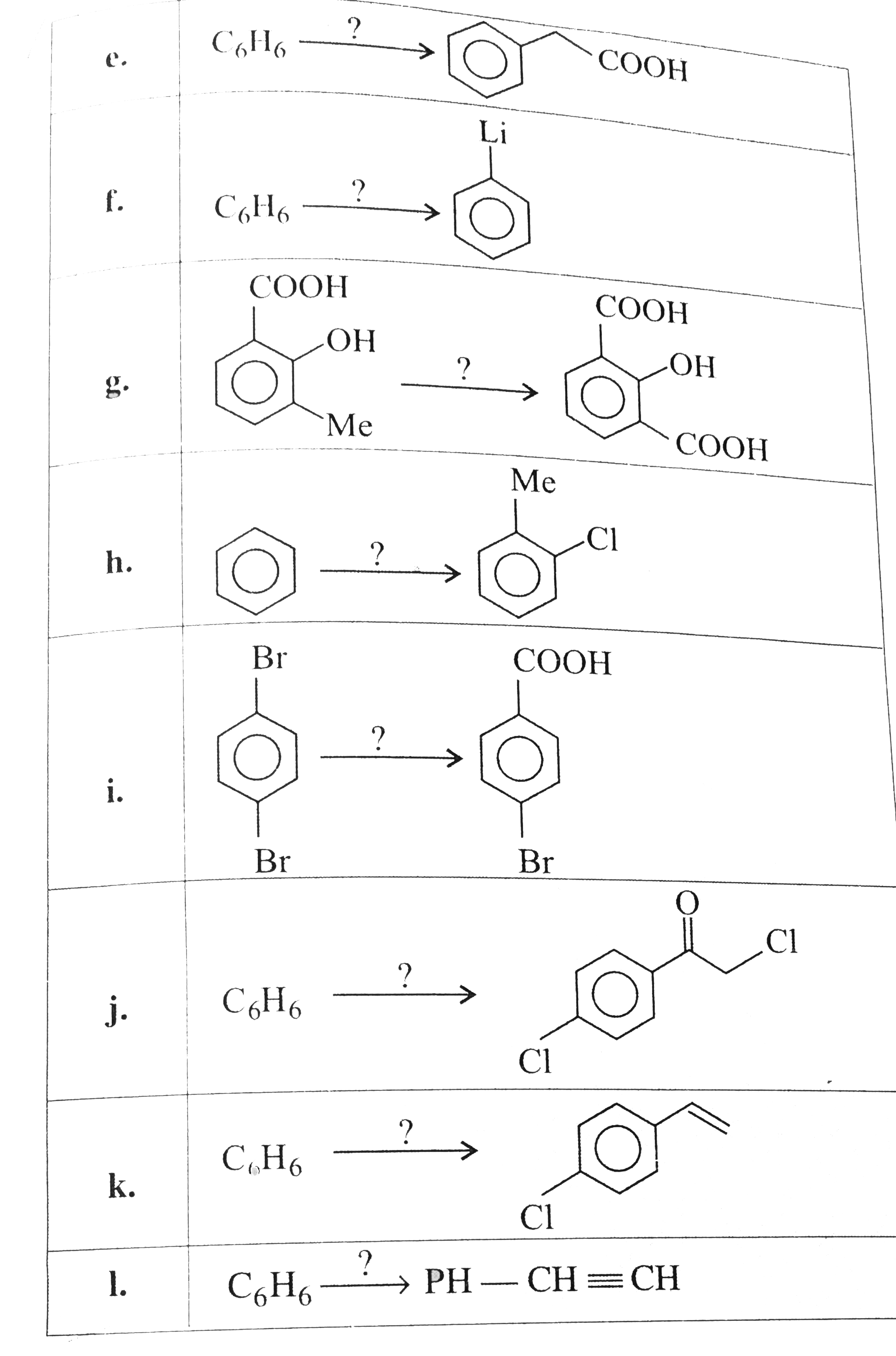 View Solution
View Solutiona. The treatment of `RX` with aqueous `KOH` leads to the information of alcohols but in the presence of alcholic `KOH` or `NaOH`, alkenes are the major products. Expalin why.
b. `CHF_(3)` is less acidic than `CHCl_(3)`. Explain.
c. Wurtz reaction in case of tert-alkyl halide fails. Explain.
d. Dipole moment of `C_(6) H_(5) Cl` is lower than that of `C_(6) H_(11) Cl` (cuclohexul choride). Expalin why.
e. Why should Grignard reagent be prepared under anthydrous conditions?
f. Why does `p-` dichlorobenzene have higher melting point and lower solubility than `o-` and `m-` isomers ?View SolutionGive the decreasing order of following with their properties as indicated.
A. Decreasing basic, mucliophllic and fugacity orders:
a. `I, `H_(2)O`, II. `CH_(3)OH`, III. `O overset(o-)(H)`, IV. `CH_(3)O^(o-)`
b. I. `H_(2)O`, II. `C_(2)H_(5) OH`, III. O overset(o+)(H)`, IV. `C_(2)H_(5)O^(o-)`
c. I. `HCO_(3)^(o+)`, II. `F^(o-)`
III. `F_(3) C - COO^(o-)`, IV. `NO_(3)^(o-)`
B. The decreasing order of `ArSN` reaction:
a. I. `PhCl`
II. `p-NO_(2) - C_(6)H_(4) - Cl`
III. `2,4,6-` Trinitro chlorobenze
IV. `2.4-` Dintro chlorobenzene
I. `PhF`
II. `p-NO_(3)S - C_(6) H_(4) - F`
III. `p-HOOC - C_(6) H_(4) - F`
IV. I`p-NO_(2) - C_(6) H_(4) - F`
C. I. `PhCl`
II. `p-NO_(2) - C_(6) H_(4) - Cl`
III. `o-NO_(2) - C_(6) H_(4) - Cl`
IV. `m-NO_(2) - C_(6)H_(4) - Cl`
C. The decreasing order of `SE` reaction:
a. I. `PhCl`, II. `C_(6) H_(6)`
III. `PhCH_(3)`, IV. `PhOMe`
b. I. PhCH_(3)`
II. `o-MeO-C_(6) H_(4) - Me`
III. `m-MeOC_*(6) H_(4) - Me`
IV. `p-MeO - C_(6)H_(4) - Me`
c. I. `PhNH_(2)`, II. `PhNHCHOCH_(3)`
III. `PhNHCOPh` , IV. `PhNHTs`
d. I. `PhNH_(2)`
II. `o-NP_(2) - C_(6) H_(4) - NH_(2)`
III. `m-NUO_(2) - C_(6) H_(4) - NH_(2)`
IV. `p-NO_(2) - C_(6) H_(4) - NH_(2)`View SolutionDistingulish between the following compounds:
a. I. `m-` Iosotoluene and II. Benzyl iodide.
b. I. `p-` Bromonisole and II. `p-` nitrobromoobenzene,
c. I. Styrene and II. Phenylacterlyelen,
d. I. Touene II. Stryene III. Methyl cyclohexane, IV. `PhCMe_(3) V. View Solution
View SolutionComplete the following reactions:
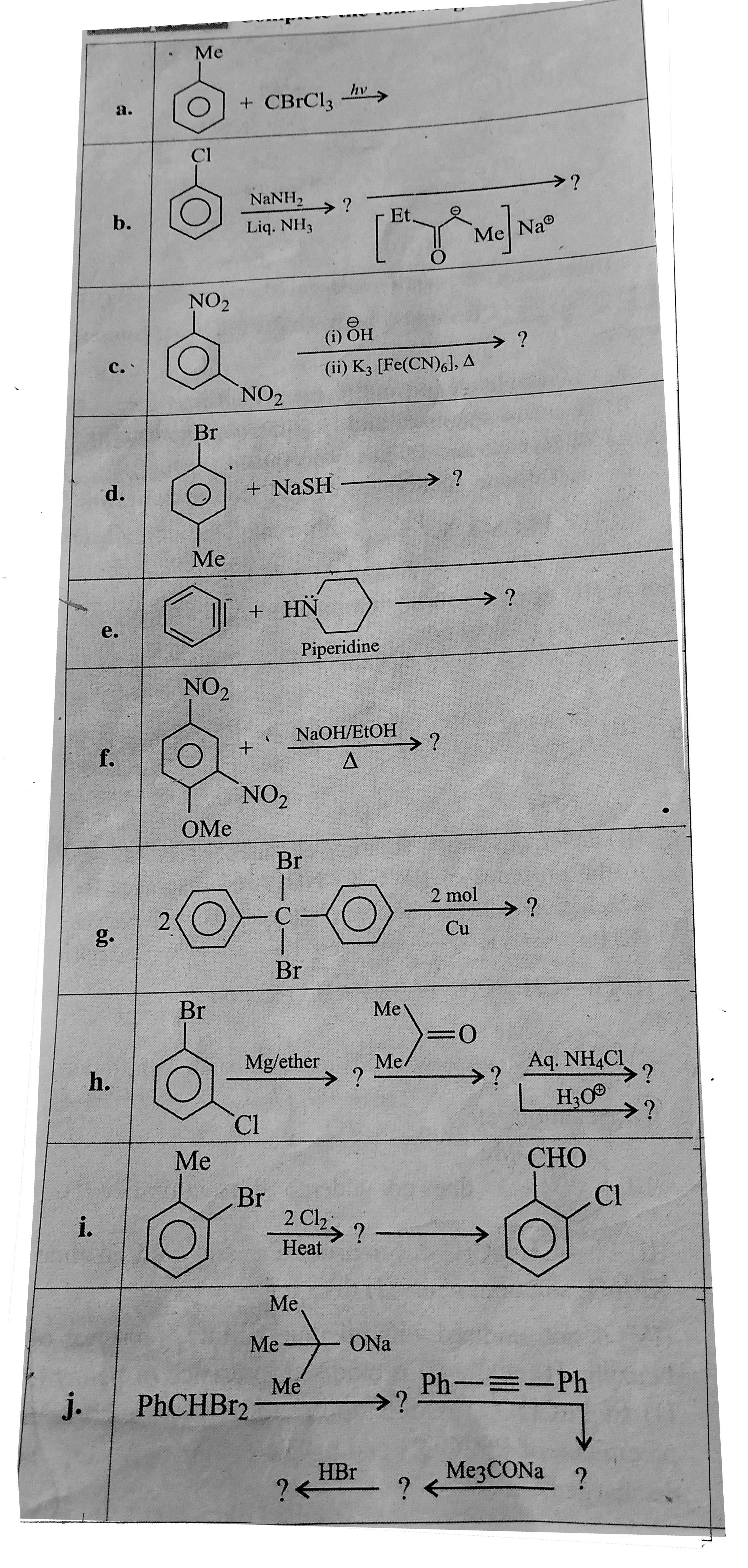
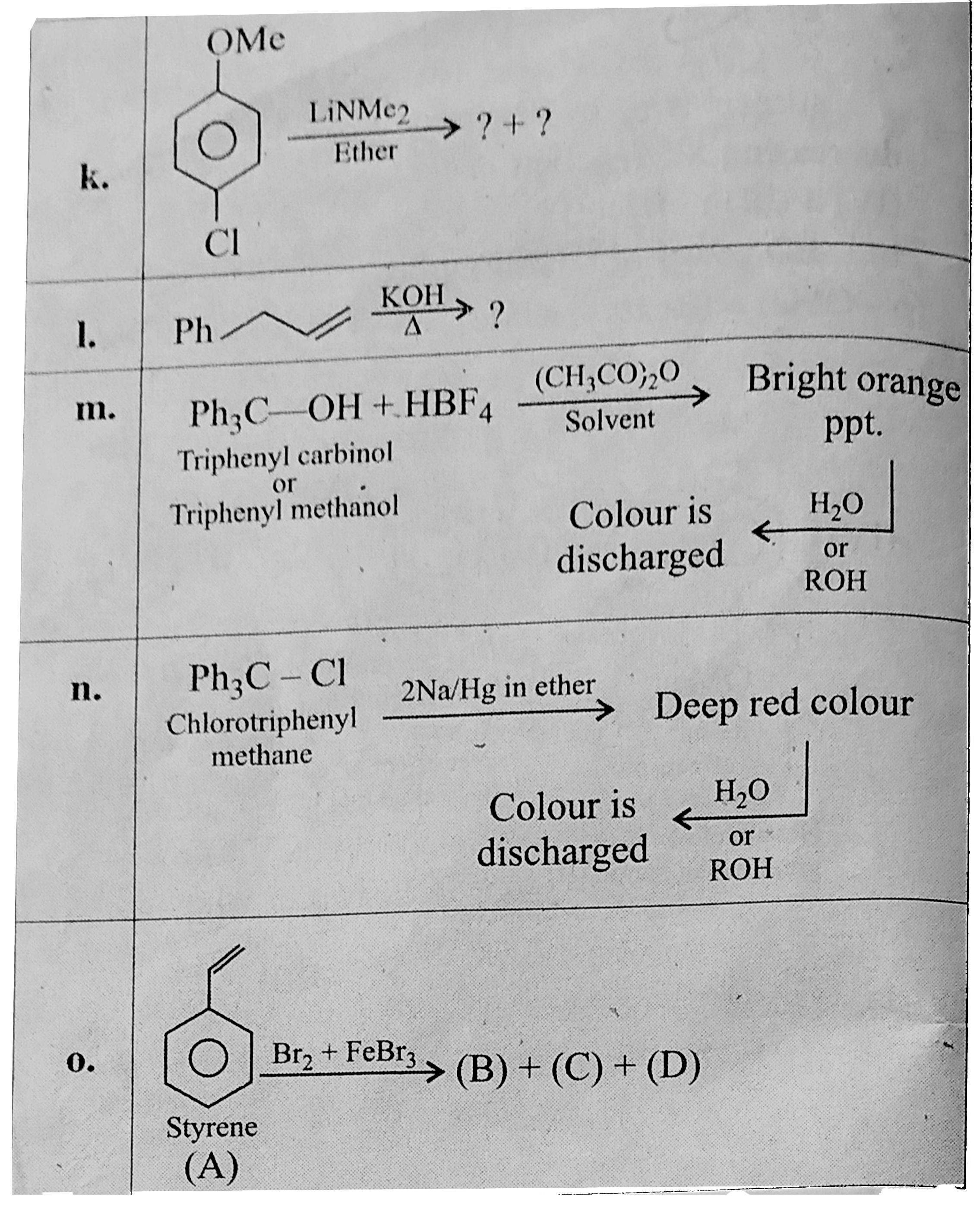 View Solution
View SolutionIndicate the position where `ArSN` reaction will take place and explain why.
 View Solution
View Solution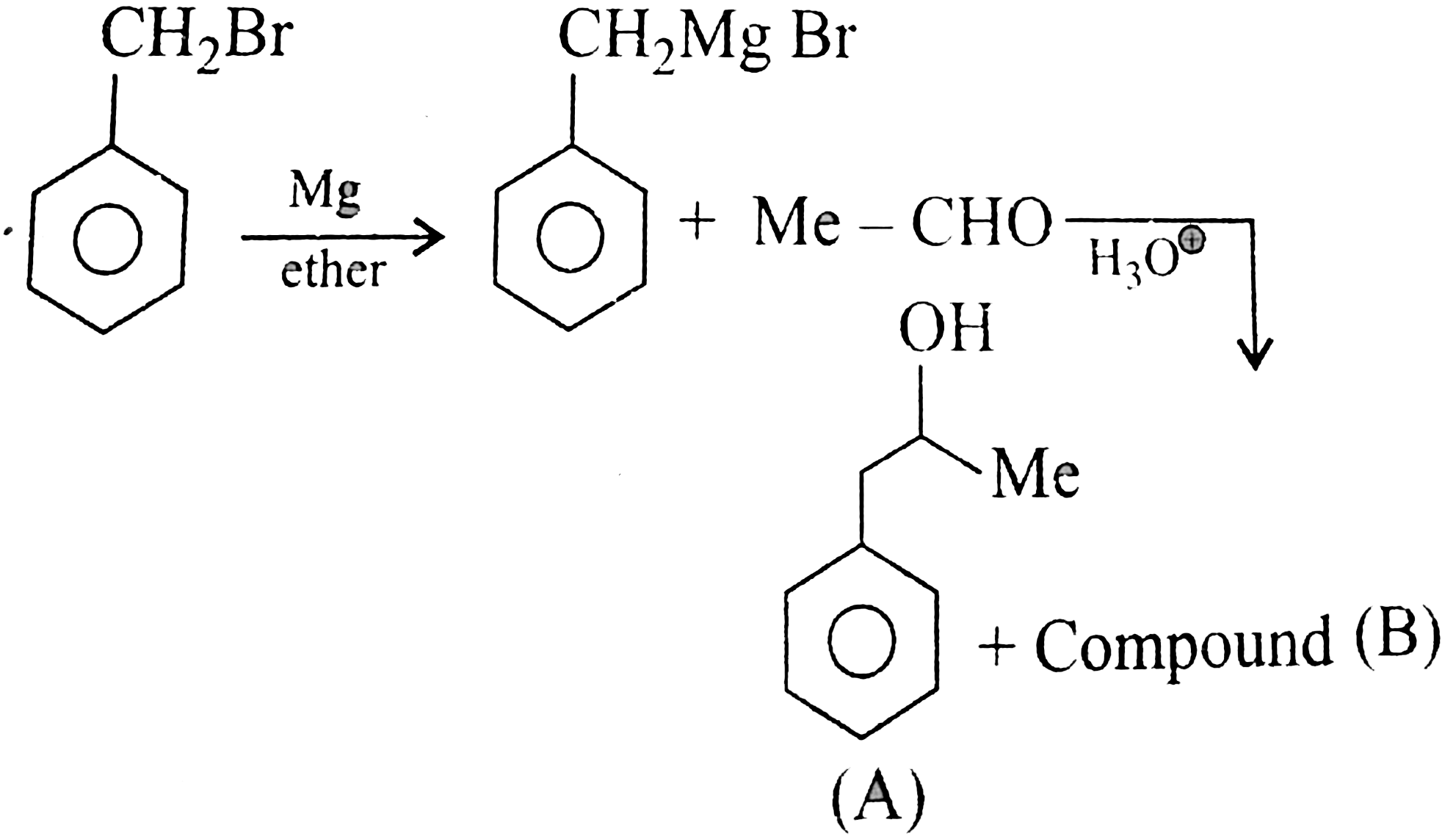
Compound `(B)` is an ismoer of `(A0`. Compound `(B)` shows positive iodoform test and gives `o-` toule acid. What is `(B)` ? Explain its formation.05:24View Solution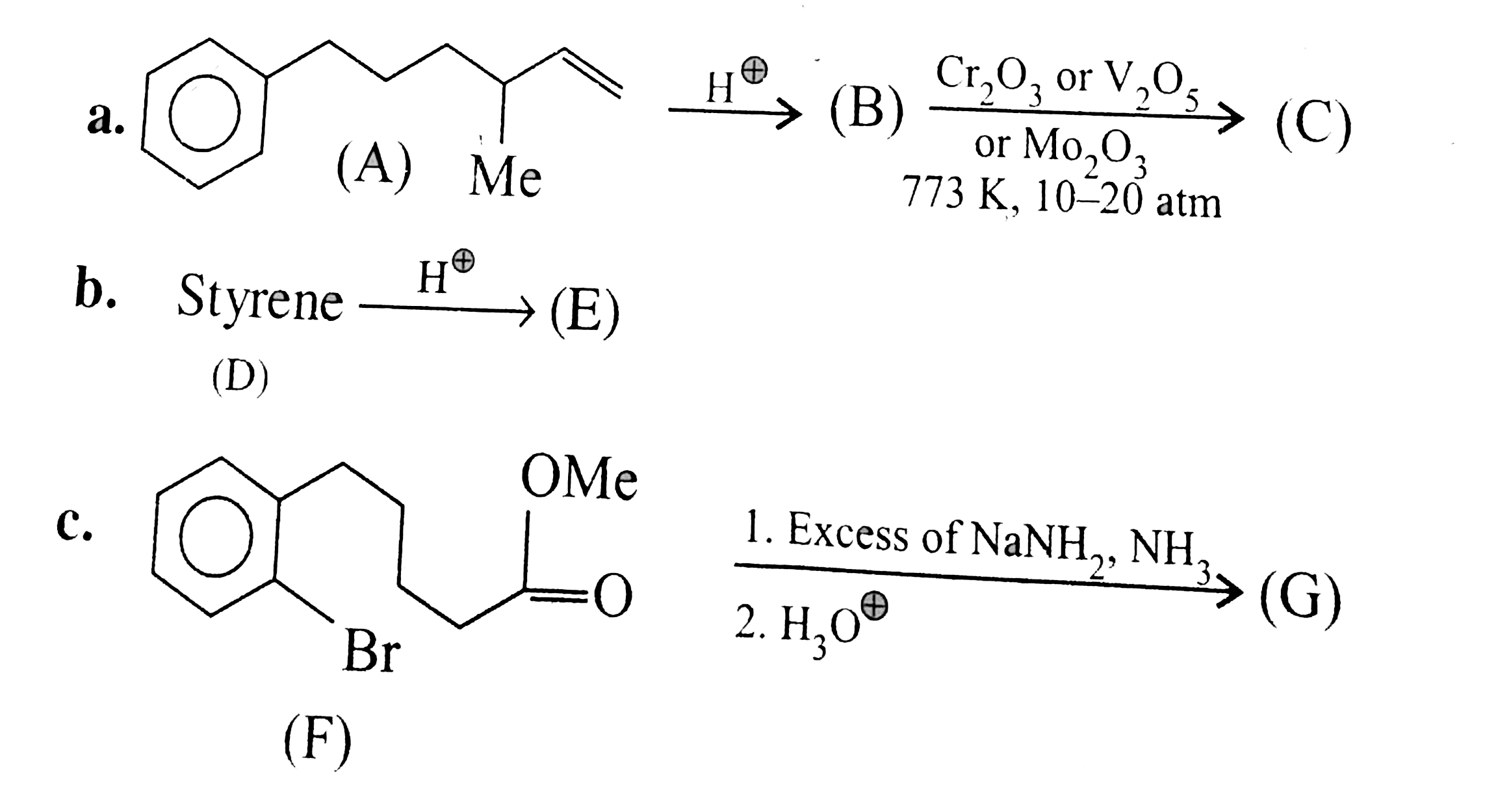
 View Solution
View Solutiona. Account for the rapid rate of ehanoulysis id
 , although it is `1^(o+)` halide.
, although it is `1^(o+)` halide.
Explain the following reactions:
 View Solution
View SolutionI. Give the product of debromnination of with `Kl` in acetone solution of the folloiwing.
a. Erythro or mes`-2,3-` dibromobutane
II. Expalin why `(A)` readily forms alkene with `1^(o-)` but `(B)` does not.

III. Give the major product of the following reaction:
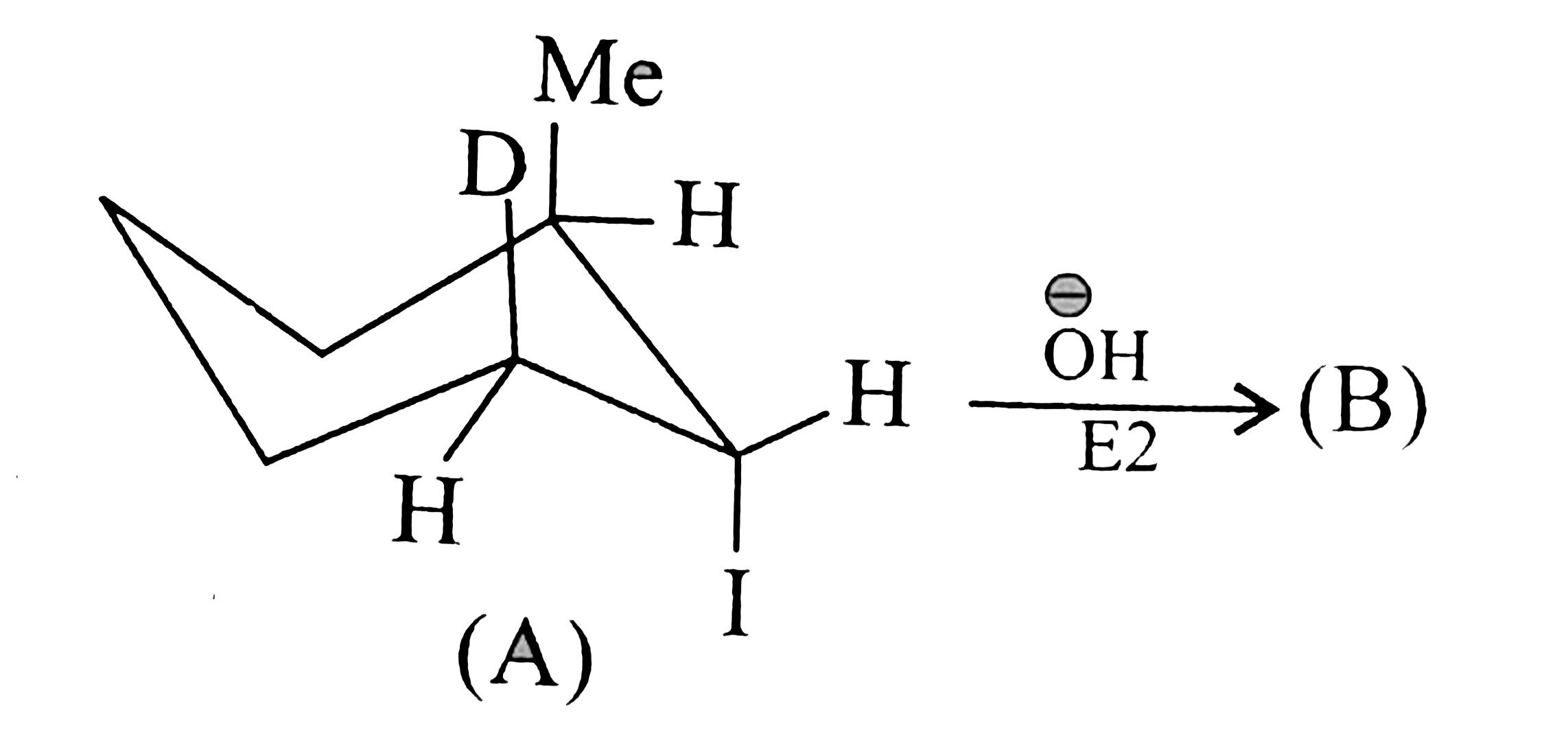 View Solution
View SolutionSyntesise the following:
a. Cyclohexanol `(A)` to `1,2,3-` tridenuterocy cloxane `(B)`.
b. `E-` but `2-ene` to
i. Which diastermoer of `(B0` is obtaine?
ii. If `Z-` But `25-ene` is used, which diastermoer of `(B)` is obtained?
c.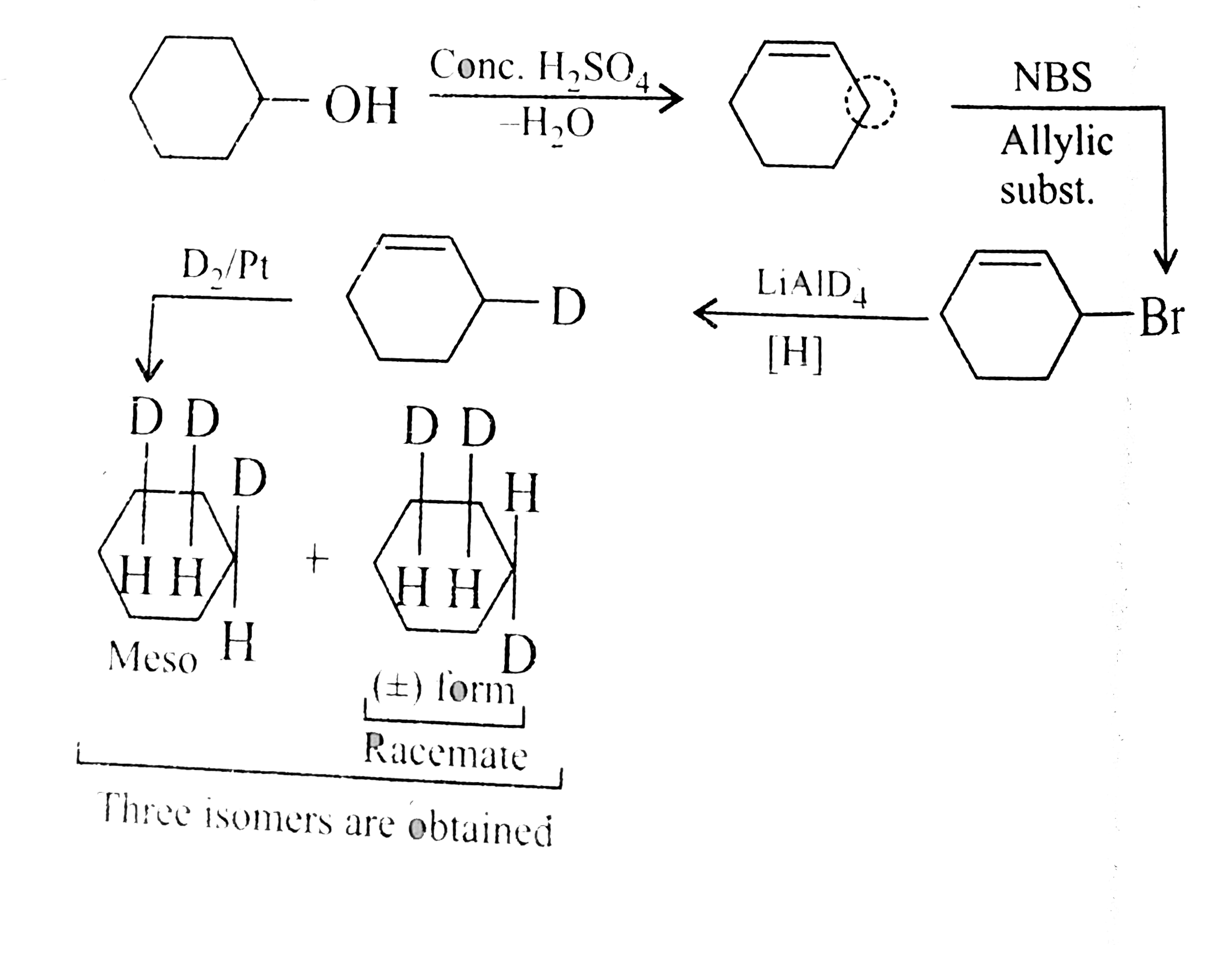
What is product `(C)` ? Which reaction [`(1)` or `(2)`] is faster and why?View SolutionGive the majore product, when the following compounds are treated with sodium methoxide.


Equaction `(I)` shows no effect with the addition of `Br^(ᶱ)` to the reaction but Eq. (2) shows the common ion effect of `Br^(ᶱ)` if supplied from external source. Why?
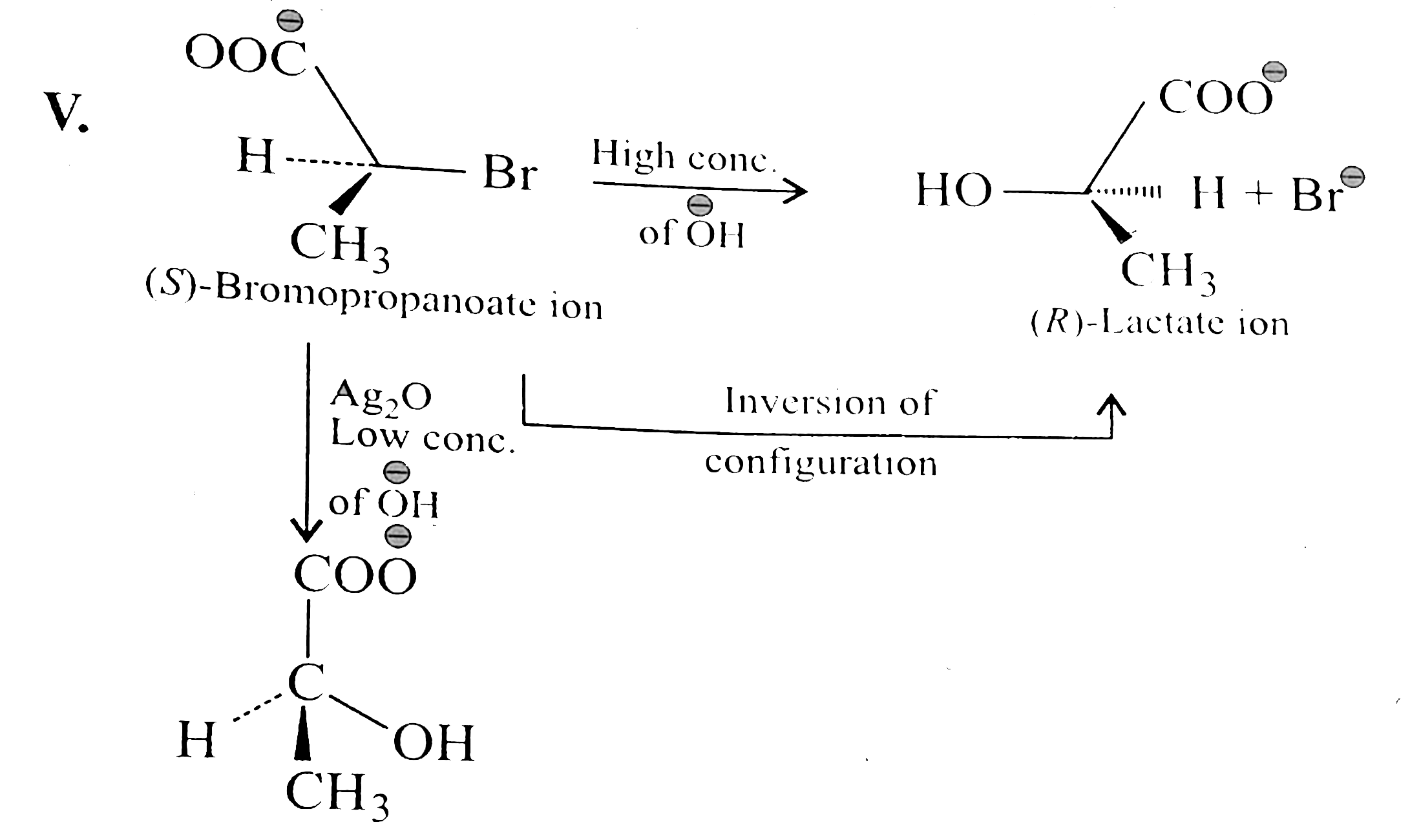 View Solution
View SolutionI. Which of the following solvents is the reaction faster?

II. Indicate `SN^(-1)` or `SN^(2)`.

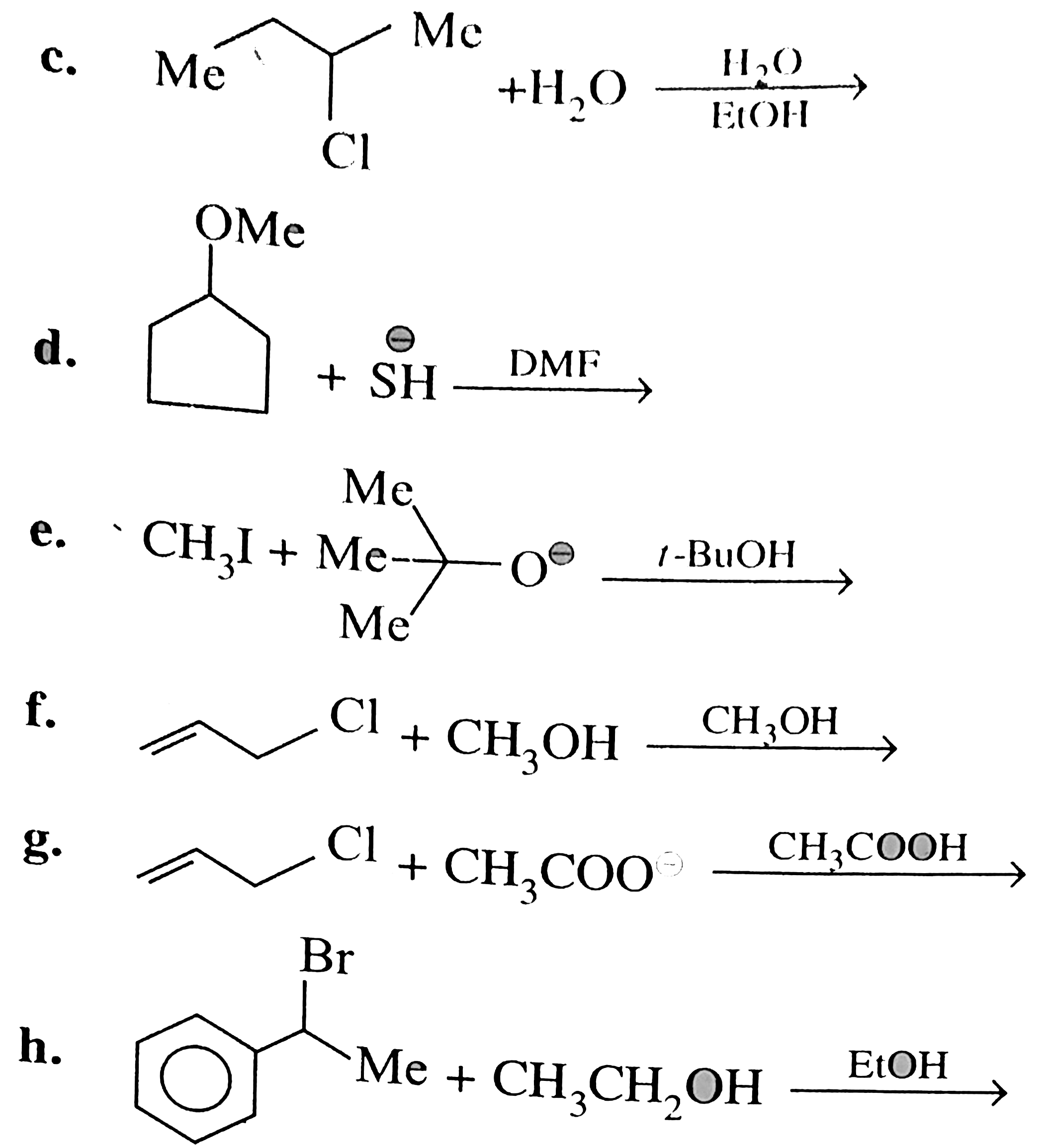 View Solution
View SolutionI. Give the products of the following:


II. Which has faster rate of `SN^(-1)`?

III. Which has faster rate of `SN^(-1)`?

IV. Give the decreasing order of:
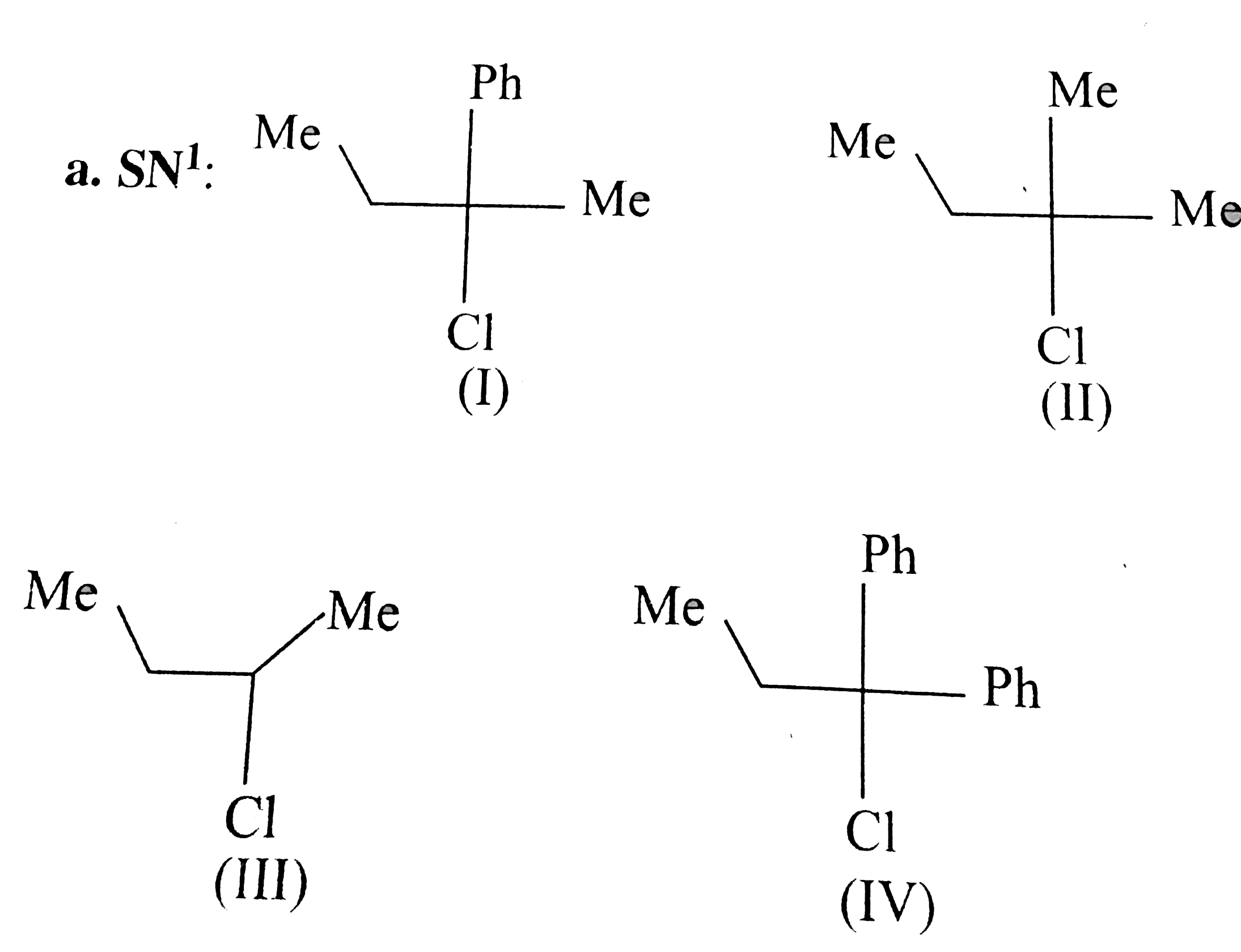
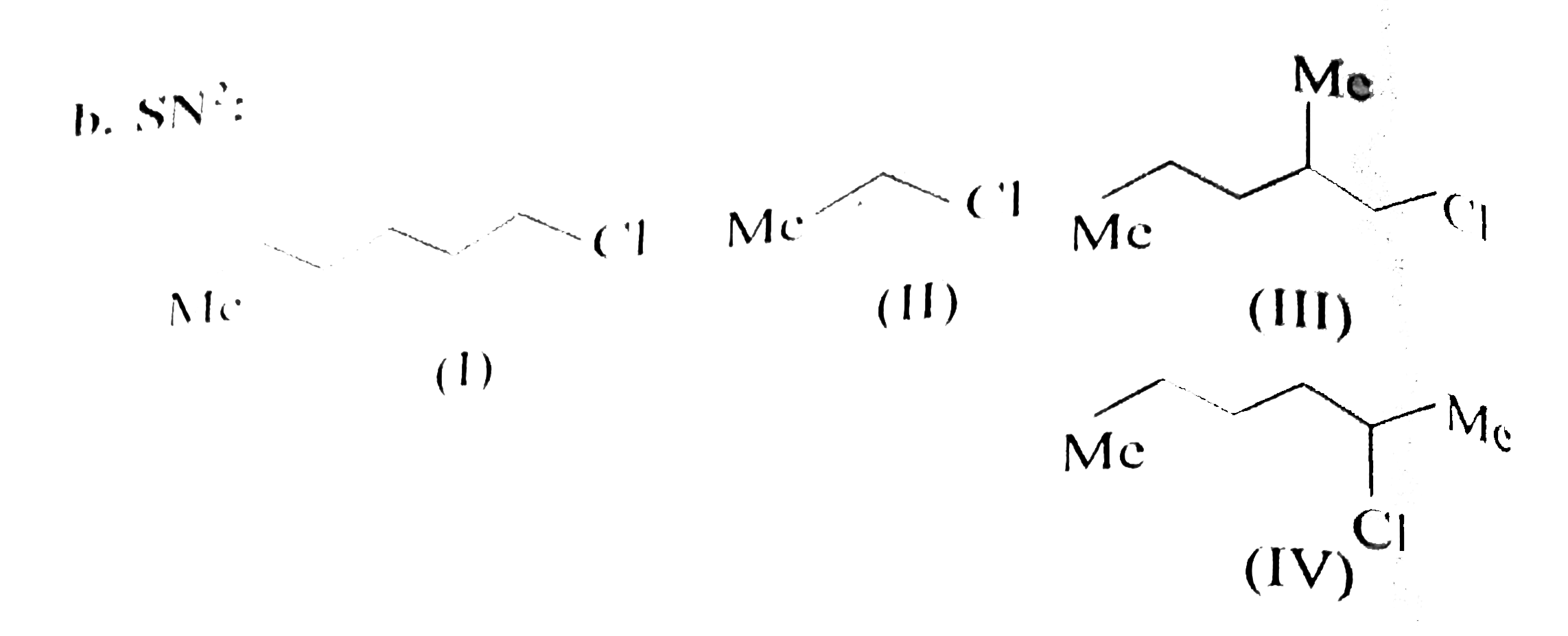
Show the mechanism for the fromation of there products and sub-products.
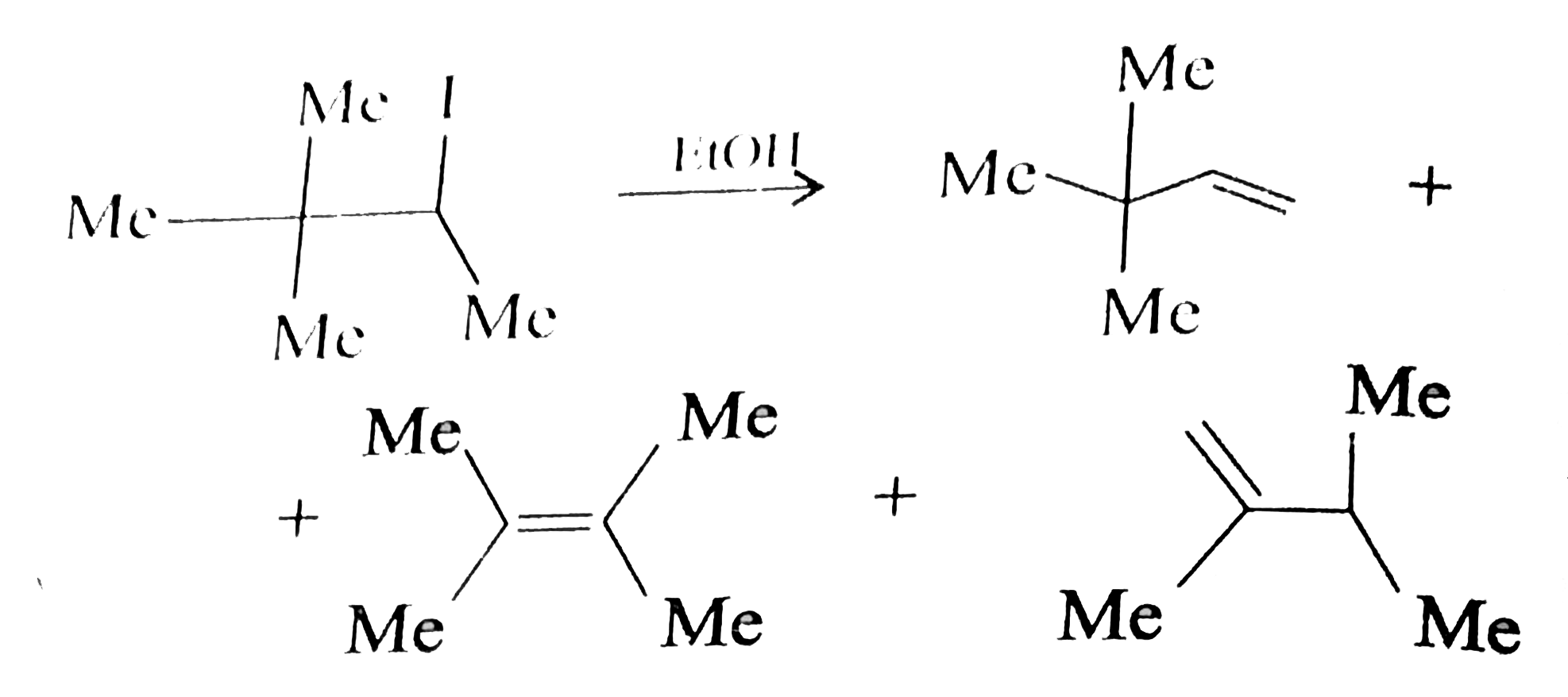
Explain teh formtaion and mechanism.
VII. Explain wheter these reactions would follow the `SN^(-1)` or `SN^(-2)` and which is faster.

VIII. What are the products of the following reactions?
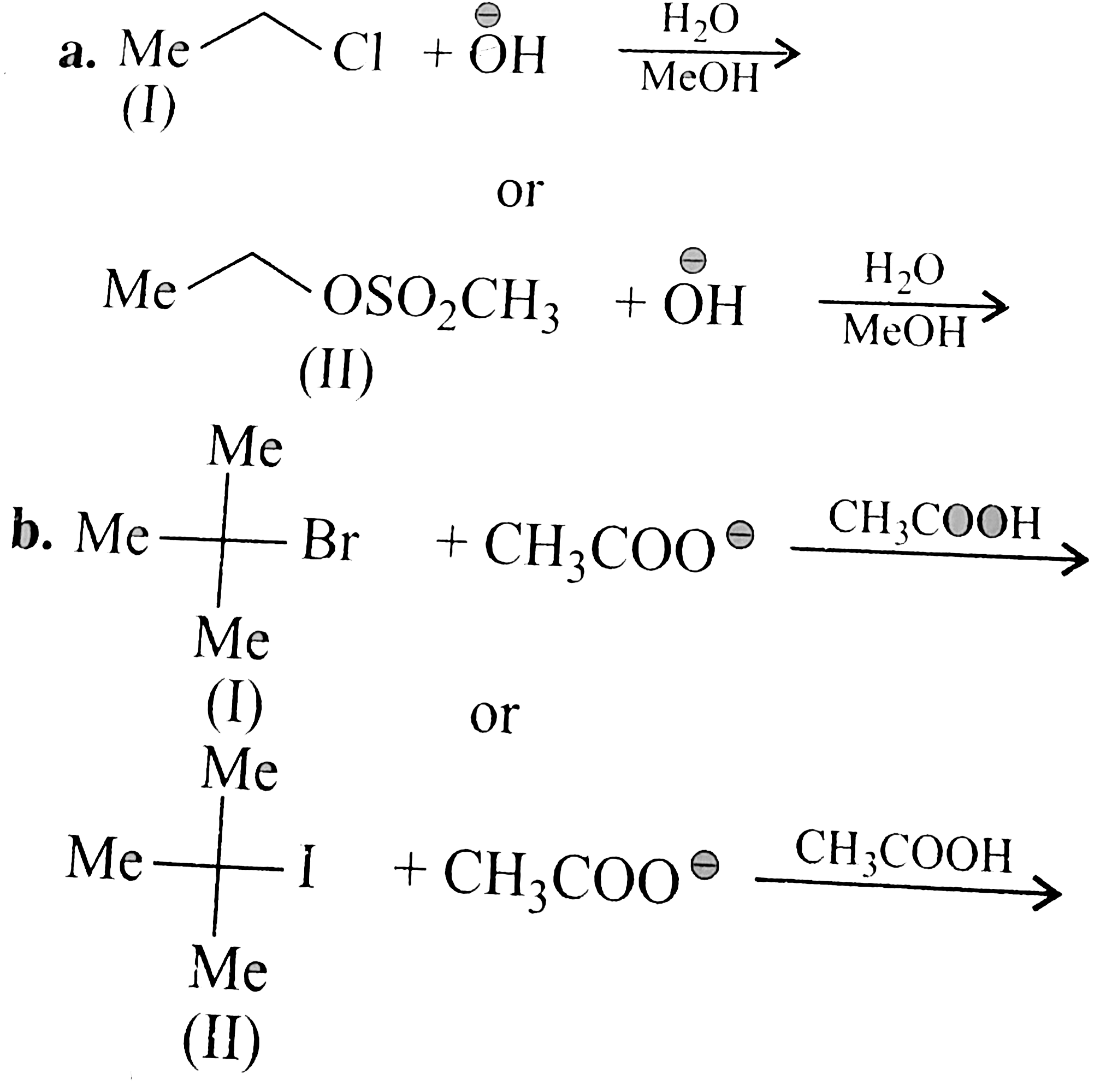
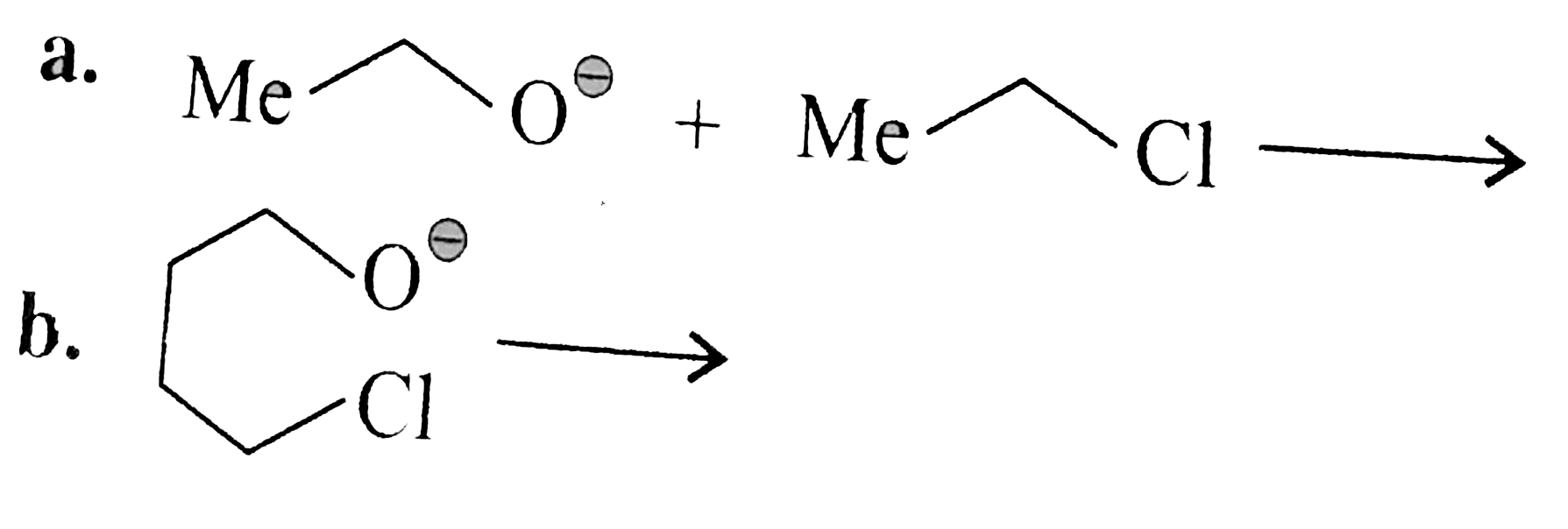
IXgt a. This reacation gives three subtituion products. Show teh structure.

b. Which has faster rate?

X. GIve teh products of the following:

XI. Which is more reactive towards acid-catalysed hydration and explain the regiochemistry of the alchohol formed.

XII. Which hydrolyses at faster rate?
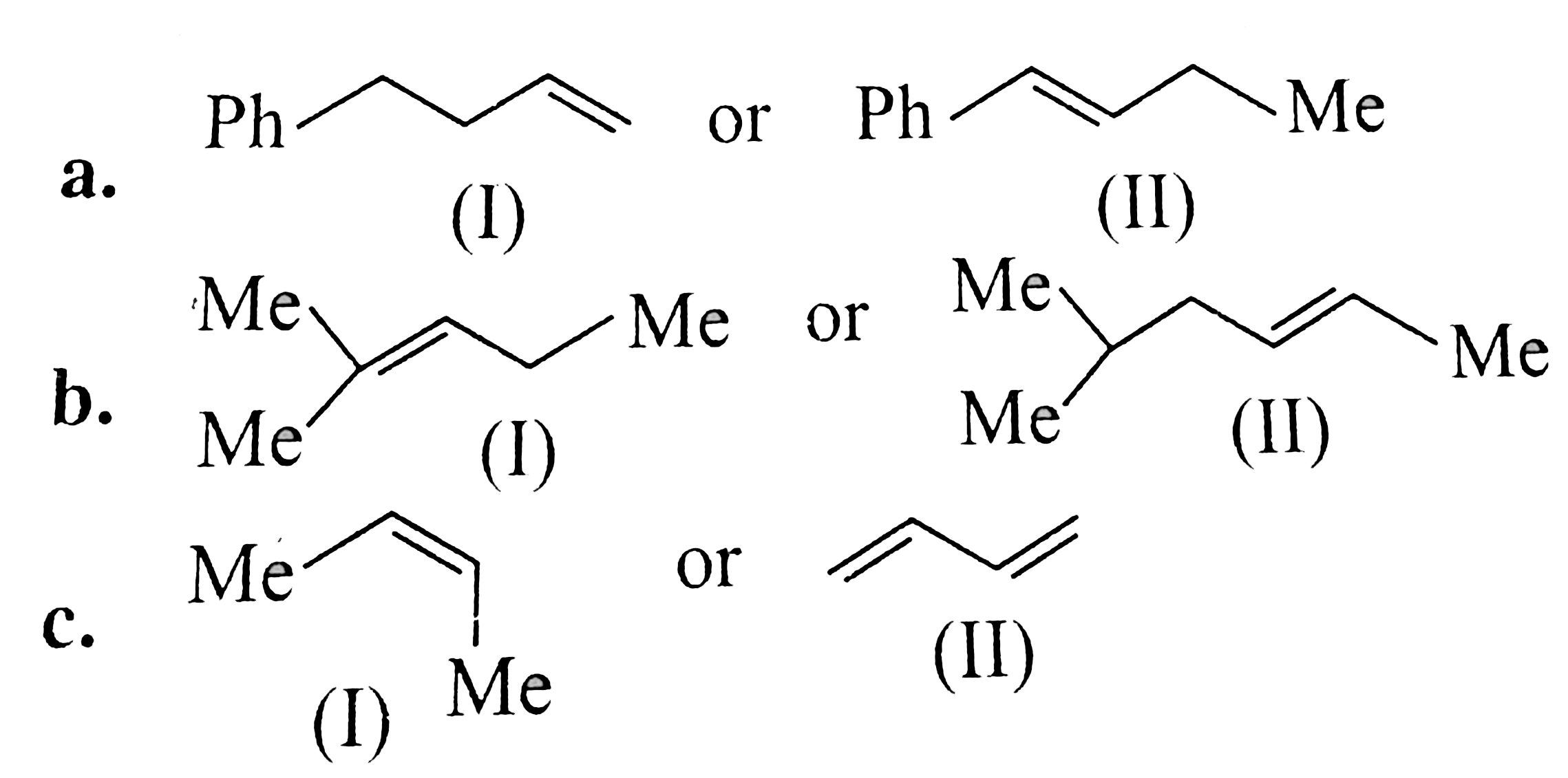

 View Solution
View SolutionA Grignard regane t`(A0` and a haloalkene `(B)` react together to give `(C)` compound `(C)` on heating with `KOH` yields a mixture of two geometrical isomers, `(D)` and `(E)` of which `(D)` predominates. `(C)` gives `1-` bromo `3-` phenyl propane on reaction with `Hbr` in the presence of a peroxide. Give teh structures of `(A), (B)`, and `(C)` and the configuratins of `(D)` and `(E)`.
View SolutionCataylitc dehydrogention of methylcyclohexxane, obtained form petroleum, gives a liquid which on treatement with chlorosulphonic acid at `370K` yileds a mixture of two isomers `(A)` and `(B), C_(7)H_(7)SO_(2) CL`. The major isomer `(A)` reacts with ammonia to from `(C)`, which on oxidation with permangnate gives compound `(D)` gives a well-known sweet-ening agent. `(E)`. The major isomer `(B)` also reacts wtih ammonia to give a compound `(F)` which on treatment with `NaClO//NaOH` gives an antiseptic `(G)`. Idntify `(A)` to `(G)`.
View SolutionAn organic compound (A) having C = 16.27%,H = 0.677%, Cl = 72.203% reduces Fehling solution and on oxidation gives an acid (B) having C = 14.679%, H = 0.612% and Cl = 65.137%. (B) on distillation with sodalime gives a sweet smelling liquid (C) which contains 89.12% chlorine. (C) can also be obtained by heating (A) with alkali. (A) can also be obtained by the action of Cl2 on `C_2 H_5 OH`. Identify (A), (B) and (C) and explain the reactions.
11:00View SolutionBenzene reacts with `CH_(3)I` in the presence of `AlCl_(3)` to give compound `(A) (C_(7) H_(8))` which undergas oxidation with alkaline `KMnO_(4)` to give an acidic compound `(B).(B)` reacts with `SOCl_(2)` to give `(C)` which gives `(D)` with ammonia. The compound `(D)` on reaction with bromine and alkali froms `(E)` which reacts with bromnine water to give `(F) (C_(6) H_(4) NBr_(3)). (F)` reacts with `NaNO_(2)` adn `HCl` and forms `(G) (C_(6) H_(2) N_(2) Br_(3) Cl)`. Additiaon of `Kl` froms `(H)` Indenitify the compounds `(A)` to `(H)`.
View SolutionTwo isomeric mononitro derivaters `(B)` and `(C)` are obtained by the nirtration of an organic compound `(A), C_(7) H_(8)O`. Treatment of `(A0` with acetyl chloride products `(D)` which on reaction with `CrO_(2)Cl_(2)` gives `(E)` whose oxidation with neutral `KMnO_(4)` followed by acidification gives `(F)`. Compound `(F)` on heating gives pheonl. `(A)` on treatment with alkaline `C_(6) H_(5)SO_(2)Cl` produces. `(A)` on treatment with alkaline `C_(6) H_(5) SO_(2)Cl` produces `(G)` which on oxidiation with `KMnO_(4)` gives `(H)`. Hydrolysis of `(H)` also gives `(F)`. Give teh structures of `(A)` to `(H)`.
View SolutionAn organic compound `(A) (C_(9)H_(12))` gave `(B) (C_(8) H_(6)O_(4))` on oxidation by alkaline `KMnO_(4) (B)` on heating does not from anhydride. Also , `(B)` reacts with `Br_(2)` in the presence of iron to give only one monobromo-derivative `(C)(C_(8)H_(5) BrO_(4))`. WHat are `(A), (B)`, and `(D)` ?
05:04View Solution
Solved Examples questions and complete solutions for chapter AROMATIC COMPOUNDS AND ALKYL AND ARYL HALIDES of CENGAGE CHEMISTRY (ENGLISH) of Class 12
All Exercises from CENGAGE CHEMISTRY Class 12 CHEMISTRY AROMATIC COMPOUNDS AND ALKYL AND ARYL HALIDES
- Archives Assertion-Resoning
- Archives Fill In Theblanks
- Archives Mutiple Correct
- Archives Mutiple Correct Answers Type
- Archives Single Correct
- Archives Single Correct Answer Type
- Archives Subjective
- Archives Subjective Type
- Exercises Assertion-Resoning
- Exercises Assertion-Resoning Type
- Exercises Concept Application
- Exercises Concept Application Type
- Exercises Linked Compreshension
- Exercises Linked Compreshension Type
- Exercises Multiple Correct
- Exercises Multiple Correct Answers Type
- Exercises Single Correct
- Exercises Single Correct Answer Type
- Exercises Subjective
- Exercises Subjective Type
- Illustration
- Solved Examples
- Solved Problems
